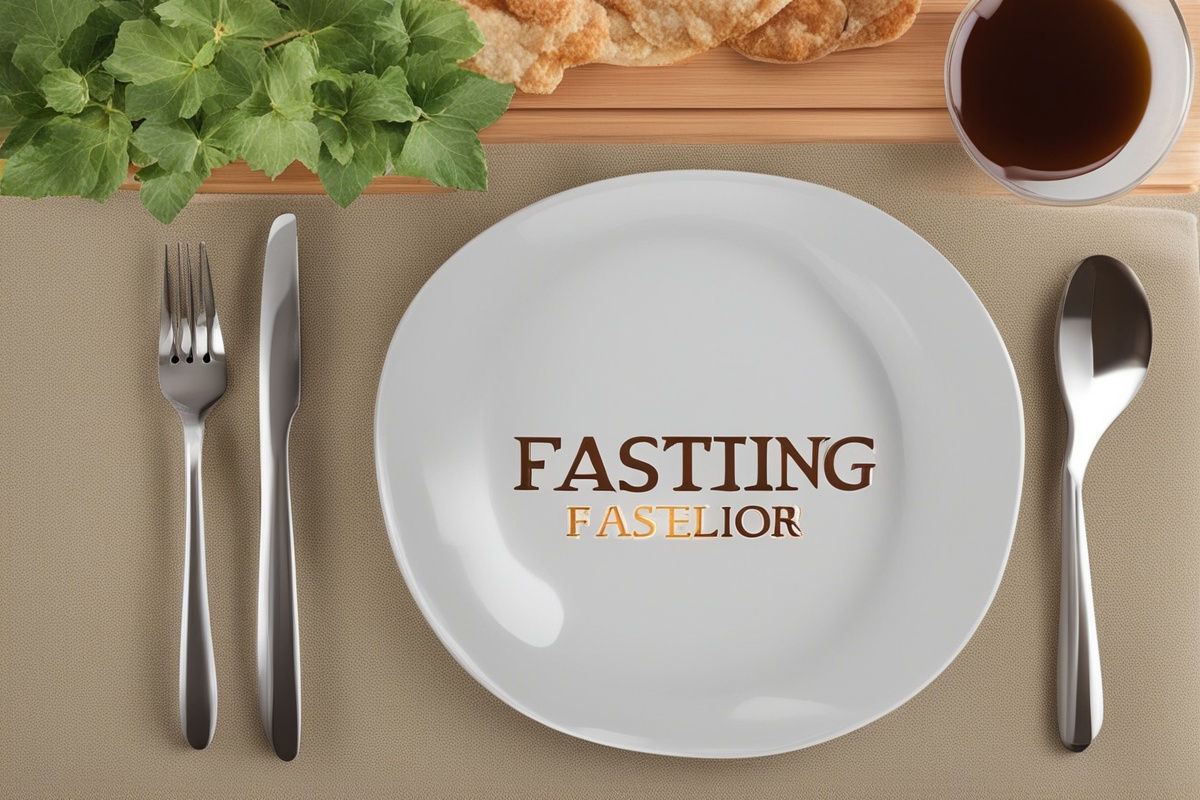As we age, maintaining health and vitality becomes a top priority, and many seniors are turning to innovative approaches like fasting to support their wellness goals. Fasting, the practice of voluntarily abstaining from food for a specific period, has gained popularity for its potential benefits in weight management, metabolic health, and even longevity. But is fasting safe for seniors? How can older adults incorporate this practice into their lives without compromising their health? In this comprehensive guide, we’ll explore the ins and outs of fasting for seniors, diving into the science, benefits, risks, and practical tips to ensure a safe and effective experience. Whether you’re a senior curious about fasting or a caregiver seeking guidance, this post will provide the clarity you need to make informed decisions.
What Is Fasting, and Why Consider It in Later Years?
Fasting isn’t a new concept—it’s been practiced for centuries across cultures for religious, spiritual, and health reasons. In modern times, it’s often associated with methods like intermittent fasting (IF), where individuals alternate between eating and fasting windows, or prolonged fasting, which involves abstaining from food for 24 hours or more. For seniors, fasting can be appealing due to its potential to address age-related concerns like weight gain, insulin resistance, and inflammation. Research suggests that fasting may trigger cellular repair processes like autophagy, which could play a role in slowing aging (Mattson & Arumugam, 2018). However, while the idea of fasting seniors embracing this practice sounds promising, it’s crucial to understand how aging bodies respond differently to food restriction compared to younger individuals.
Potential Benefits of Fasting for Seniors
The benefits of fasting have been studied extensively, and some findings are particularly relevant for older adults. One key advantage is improved metabolic health. As we age, our metabolism slows, and conditions like type 2 diabetes become more prevalent. Intermittent fasting has been shown to enhance insulin sensitivity and lower blood sugar levels, which can be a game-changer for seniors managing or preventing diabetes (Patterson et al., 2015). Additionally, fasting may support weight management by reducing calorie intake and promoting fat loss, a critical factor for seniors dealing with age-related weight gain. There’s also emerging evidence that fasting could reduce inflammation, a driver of many chronic diseases common in older age, such as arthritis and heart disease (Longo & Mattson, 2020). For senior fasting enthusiasts, these benefits could translate into a higher quality of life, provided the practice is approached with caution.
Risks and Challenges of Fasting in Older Adults
While the benefits are enticing, fasting isn’t without risks, especially for seniors. Aging bodies have unique nutritional needs, and prolonged periods without food can lead to nutrient deficiencies, muscle loss, or dehydration. Seniors are also more likely to have medical conditions or take medications that could complicate fasting. For instance, fasting might exacerbate issues like low blood sugar in those with diabetes or cause dizziness in individuals with low blood pressure. There’s also the risk of sarcopenia, the age-related loss of muscle mass, which could be worsened by inadequate protein intake during fasting (Cruz-Jentoft et al., 2019). This is why fasting for seniors must be personalized and ideally supervised by a healthcare professional to mitigate these potential downsides.
How Seniors Can Fast Safely: Practical Tips
If you’re a senior considering fasting, or you’re helping a loved one explore this practice, safety should be the top priority. The good news is that with the right approach, fasting for older adults can be both safe and beneficial. Here are some practical tips to get started:
- Consult a Doctor First: Before beginning any fasting regimen, speak with a healthcare provider, especially if you have chronic conditions or are on medications.
- Start Small: Begin with a gentle form of intermittent fasting, such as the 12:12 method (12 hours of fasting, 12 hours of eating), to allow your body to adjust.
- Stay Hydrated: Drink plenty of water during fasting periods to prevent dehydration, a common concern for seniors.
- Focus on Nutrient-Dense Meals: When breaking your fast, prioritize balanced meals with protein, healthy fats, and complex carbs to support muscle health and energy levels.
- Listen to Your Body: If you feel weak, dizzy, or unwell, stop fasting immediately and seek medical advice.
Best Fasting Methods for Seniors
Not all fasting protocols are suitable for older adults. The key is to choose a method that aligns with your lifestyle and health status. Here are some of the most senior-friendly fasting approaches:
- 12:12 Fasting: As mentioned earlier, this involves fasting for 12 hours (often overnight) and eating during a 12-hour window. It’s a low-risk way to ease into fasting.
- 16:8 Intermittent Fasting: This method involves fasting for 16 hours and eating within an 8-hour window. It’s more intensive but can work for active seniors with medical clearance.
- 5:2 Diet: On this plan, you eat normally for five days of the week and restrict calories (around 500–600) on two non-consecutive days. It’s flexible and less restrictive than daily fasting.
Remember, the best fasting method for seniors fasting is one that feels sustainable and doesn’t cause stress or discomfort. Experiment with different approaches under guidance to find what works for you.
Special Considerations for Seniors Fasting
Beyond choosing the right fasting method, there are additional factors seniors should keep in mind. Aging often comes with a reduced sense of thirst, so dehydration is a real concern during fasting—make a conscious effort to sip water throughout the day. Additionally, seniors may have slower digestion or dental issues, so breaking a fast with easy-to-digest foods like soups or smoothies can be helpful. If you’re on medications, timing is critical; some drugs need to be taken with food, so coordinate fasting windows accordingly. Lastly, social isolation can be a challenge for older adults, and fasting shouldn’t mean missing out on communal meals or family gatherings. Plan your fasting schedule to align with social events when possible, ensuring that fasting for seniors enhances rather than disrupts your life.
In conclusion, fasting can be a powerful tool for seniors looking to boost their health, manage weight, or improve metabolic markers, but it’s not a one-size-fits-all solution. The journey of fasting for seniors requires careful planning, medical oversight, and a willingness to adapt based on how your body responds. By starting slowly, prioritizing hydration and nutrition, and choosing a senior-friendly fasting method, older adults can explore the potential benefits while minimizing risks. Always remember that health isn’t just about trends or quick fixes—it’s about sustainable practices that support your unique needs as you age. Have you or a loved one tried fasting in later years? Share your experiences in the comments, and let’s keep the conversation going about how senior fasting can fit into a vibrant, healthy lifestyle.
References
- Cruz-Jentoft, A. J., Bahat, G., Bauer, J., et al. (2019). Sarcopenia: Revised European consensus on definition and diagnosis. Age and Ageing, 48(1), 16–31. https://doi.org/10.1093/ageing/afy169
- Longo, V. D., & Mattson, M. P. (2020). Fasting: Molecular mechanisms and clinical applications. Nature Reviews Endocrinology, 16(4), 181–192. https://doi.org/10.1038/s41574-019-0298-1
- Mattson, M. P., & Arumugam, T. V. (2018). Hallmarks of brain aging: Adaptive and pathological modification by metabolic states. Cell Metabolism, 27(6), 1176–1199. https://doi.org/10.1016/j.cmet.2018.05.011
- Patterson, R. E., Laughlin, G. A., LaCroix, A. Z., et al. (2015). Intermittent fasting and human metabolic health. Journal of the Academy of Nutrition and Dietetics, 115(8), 1203–1212. https://doi.org/10.1016/j.jand.2015.02.018






